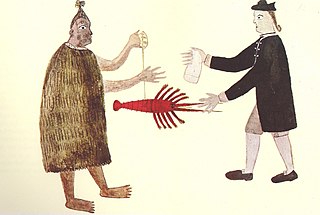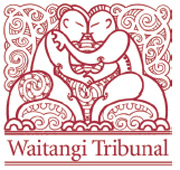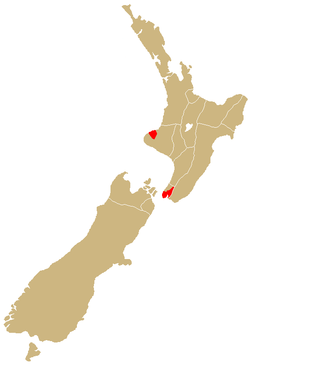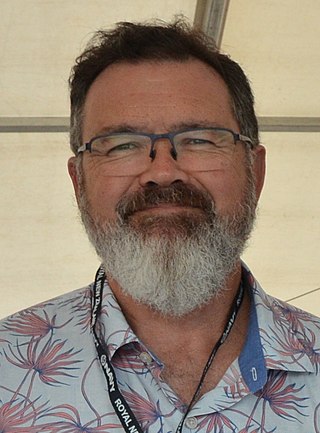
The Treaty of Waitangi, sometimes referred to as Te Tiriti, is a document of central importance to the history of New Zealand, its constitution, and its national mythos. It has played a major role in the treatment of the Māori people in New Zealand by successive governments and the wider population, something that has been especially prominent from the late 20th century. The treaty document is an agreement, not a treaty as recognised in international law. It was first signed on 6 February 1840 by Captain William Hobson as consul for the British Crown and by Māori chiefs from the North Island of New Zealand. The treaty's quasi-legal status satisfies the demands of biculturalism in contemporary New Zealand society. In general terms, it is interpreted today as having established a partnership between equals in a way the Crown likely did not intend it to in 1840. Specifically, the treaty is seen, first, as entitling Māori to enjoyment of land and of natural resources and, if that right were ever breached, to restitution. Second, the treaty's quasi-legal status has clouded the question of whether Māori had ceded sovereignty to the Crown in 1840, and if so, whether such sovereignty remains intact.
Taonga or taoka is a Māori-language word that refers to a treasured possession in Māori culture. It lacks a direct translation into English, making its use in the Treaty of Waitangi significant. The current definition differs from the historical one, noted by Hongi Hika as "property procured by the spear" [one could understand this as war booty or defended property] and is now interpreted to mean a wide range of both tangible and intangible possessions, especially items of historical cultural significance.

The Waitangi Tribunal is a New Zealand permanent commission of inquiry established under the Treaty of Waitangi Act 1975. It is charged with investigating and making recommendations on claims brought by Māori relating to actions or omissions of the Crown, in the period largely since 1840, that breach the promises made in the Treaty of Waitangi. The Tribunal is not a court of law; therefore, the Tribunal's recommendations and findings are not binding on the Crown. They are sometimes not acted on, for instance in the foreshore and seabed dispute.
The New Zealand foreshore and seabed controversy is a debate in the politics of New Zealand. It concerns the ownership of the country's foreshore and seabed, with many Māori groups claiming that Māori have a rightful claim to title. These claims are based around historical possession and the Treaty of Waitangi. On 18 November 2004, the New Zealand Parliament passed a law which deems the title to be held by the Crown. This law, the Foreshore and Seabed Act 2004, was enacted on 24 November 2004. Some sections of the act came into force on 17 January 2005. It was repealed and replaced by the Marine and Coastal Area Act 2011.
Tikanga is a Māori term for Māori law, customary law, attitudes and principles, and also for the indigenous legal system which all iwi abided by prior to the colonisation of New Zealand. Te Aka Māori Dictionary defines it as "customary system of values and practices that have developed over time and are deeply embedded in the social context". More broadly since the decline of tikanga Māori as New Zealand's "first law" in favour of English law, tikanga has often been defined as a concept incorporating practices and values from mātauranga Māori, or Māori knowledge. Tikanga is translated into the English language with a wide range of meanings—culture, custom, ethic, etiquette, fashion, formality, lore, manner, meaning, mechanism, method, protocol, and style.

Te Urewera is an area of mostly forested, sparsely populated rugged hill country in the North Island of New Zealand, located inland between the Bay of Plenty and Hawke Bay. Te Urewera is the rohe of Tūhoe, a Māori iwi (tribe) known for its stance on Māori sovereignty.
David Vernon Williams is a professor, and former deputy dean of the University of Auckland's Faculty of Law. He comes from the Hawke's Bay region of New Zealand, and was educated at Wanganui Collegiate School.
Claims and settlements under the Treaty of Waitangi have been a significant feature of New Zealand politics since the Treaty of Waitangi Act 1975 and the Waitangi Tribunal that was established by that act to hear claims. Successive governments have increasingly provided formal legal and political opportunity for Māori to seek redress for what are seen as breaches by the Crown of guarantees set out in the Treaty of Waitangi. While it has resulted in putting to rest a number of significant longstanding grievances, the process has been subject to criticisms including those who believe that the redress is insufficient to compensate for Māori losses. The settlements are typically seen as part of a broader Māori Renaissance.

The United Tribes of New Zealand was a confederation of Māori tribes based in the north of the North Island, existing legally from 1835 to 1840. It received diplomatic recognition from the United Kingdom, which shortly thereafter proclaimed the foundation of the Colony of New Zealand upon the signing of the Treaty of Waitangi.
The Māori protest movement is a broad indigenous rights movement in New Zealand. While there was a range of conflicts between Māori and European immigrants prior to the signing of the Treaty of Waitangi in 1840, the signing provided one reason for protesting. Disagreements in the decades following the signing sometimes included war.

Te Āti Awa or Te Ātiawa is a Māori iwi with traditional bases in the Taranaki and Wellington regions of New Zealand. Approximately 17,000 people registered their affiliation to Te Āti Awa in 2001, with about 10,000 in Taranaki, 2,000 in Wellington and 5,000 of unspecified regional location.

Te Ture Whenua Māori Act 1993 is a statute of the Parliament of New Zealand to "reform the laws relating to Māori land in accordance with the principles set out in the Preamble". These principles "reaffirm" the Treaty of Waitangi "relationship between the Māori people and the Crown" and "recognise that land is taonga tuku iho of special significance to Māori people". To that end, the principles "promote the retention of ... land in the hands of its owners, their whanau, and their hapu, and to protect wahi tapu". Further, they "facilitate the occupation, development, and utilisation of that land for the benefit of its owners, their whanau, and their hapu".
The law of New Zealand uses the English common law system, inherited from being a part of the British Empire.

Ngāi Takoto is a Māori iwi from Northland, New Zealand. The iwi is one of the six Muriwhenua iwi of the far north of the North Island. Ngāi Takoto trace their whakapapa (ancestry) back to Tuwhakatere, and trace their arrival in New Zealand to the Kurahaupo waka (canoe). The rohe of the iwi is focused on the upper North Island and extends to Kermadec Islands, Three Kings Island, Cape Reinga, Pao Island, Ninety Mile Beach, Waimimiha River, Ohaku hills, Whangatane River, Rangaunu Harbour and North Cape.
The New Zealand Māori Council is a body that represents and consults the Māori people of New Zealand. As one of the oldest Māori representative groups, the council exerts pressure on New Zealand governments to protect Treaty of Waitangi rights.

The judiciary of New Zealand is responsible for the system of courts that interprets and applies the laws of New Zealand. It has four primary functions: to provide a mechanism for dispute resolution; to deliver authoritative rulings on the meaning and application of legislation; to develop case law; and to uphold the rule of law, personal liberty and human rights. The judiciary is supported in its work by an executive department, the Ministry of Justice.

The principles of the Treaty of Waitangi is a set of principles derived from, and interpreting, the Treaty of Waitangi, which was signed in New Zealand in 1840. The phrase "principles of the Treaty of Waitangi" was first used in the Treaty of Waitangi Act 1975, and the principles were codified in 1987. There is no final list and they are determined on a case-by-case basis. They include the three Ps: partnership, participation and protection of rangatiratanga.

Sir Joseph Victor Williams is a New Zealand lawyer and judge. He has been a justice of the Supreme Court of New Zealand since 2019, and is the first Māori person appointed to the role.
The Māori Trustee is a statutory corporation sole with perpetual succession in New Zealand. The Trustee administers, as trustee or agent, Māori land trusts and other Māori entities.
The Native Lands Act 1865 was an Act of Parliament in New Zealand that was designed to remove land from Māori ownership for purchase by European settlers as part of settler colonisation. The act established the Native Land Courts, individualised ownership interests in Māori land replacing customary communal ownership and allowed up to 5% of Māori land to be taken for public works without compensation.









